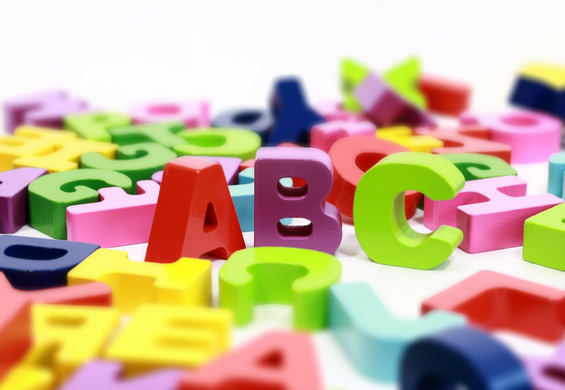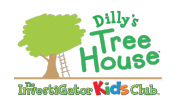
10 Feb Help your child learn the ABCs with alphabet games by the dozen
The single biggest support you can offer your child in their path to literacy is a strong foundation in the alphabet. Learning letter sounds gives children confidence and familiarity with the symbols that make up the alphabet. Teaching these sounds through playful alphabet games creates an early association between literacy and fun!
The alphabet song is great, and I encourage parents to sing it loud and proud from breakfast time to bath time to bed time and beyond. But when you think you can’t take one more refrain, know that there are many other ways you can help your little one learn his ABC’s.
Each of these alphabet games is meant to be low cost and low prep with high engagement and education value, so get ready to play and learn!
A dozen alphabet games to keep you and your child laughing and learning from A to Z.
- Play Alphabet Letter Hunt.
Take a page from the Easter Bunny and play Alphabet Letter Hunt. Cut out letters and decorate them with your child using crayons, markers, glitter, paint, or any other supplies they like. Have your child close her eyes while you hide the letters around the house or yard. Then have your child find the letters and bring them back to you, say the letter, and maybe say something that starts with that letter.
Less challenging: Decrease the number of letters you hide.
More challenging: When she returns a letter, see if she can put it in a notebook in alphabetical order before going to find the next letter.
- Play Letter Landing, a game from Dilly’s Tree House!
This ABC game is just one of many fun activities you can find in Dilly’s Tree House family engagement system. All you need is paper, markers, and a game piece! First, make large letter tiles by writing different letters of the alphabet on separate sheets of paper. Then have your child lay the letter tiles on the floor. Show her how to toss a game marker, such as a small rock or beanbag, onto one of the letter tiles. When a player lands on a tile, they say the letter name and a word that begins with the letter. Take turns with your child to try and land on different letters.
Less challenging: Have your child identify the letter when her marker lands on it.
More challenging: Have your child name three things that begin with the letter.
- Play Alphabet Scavenger Hunt while finishing up chores.
Don’t have any prep time? Don’t worry. Send your child on alphabet scavenger hunts and enjoy the silly things they find! If your child knows the beginning sound of the letter B, tell him, “You have 1 minute to bring me 3 things that start with the letter B. Ready, set, go!” Watch him scurry while you finish up some chores.
Less challenging: Increase the time and decrease the number of objects to bring back.
More challenging: Have him give a sentence that uses all 3 B words.
- Play ABC Superhero: Creativity and learning the alphabet combined!
Want to boost creativity at the same time as alphabetic knowledge? Play ABC Superhero. Choose a letter for the day and throughout the day, brainstorm what that letter might be like as a superhero. What would it wear? What would its superpowers be? For example, Super P might be pale and wear purple. She might have a pounding arm and a piercing finger. Let their imaginations run wild, then move on to another letter the next day.
Less challenging: Brainstorm descriptions or superpowers, but not both.
More challenging: Have her construct a story of how her superhero saves the day!
- Children love to sort, so Play ABC Toy Sort.
Children love to sort things into categories. In fact, sorting is one of the foundational stages of math development according to early childhood research. So why not use the ABC Toy Sort to channel that activity into alphabetic knowledge? Place letters on the floor. Make sure your child knows the letter and its beginning sound. Then ask him to sort his toys by placing them next to the letter that matches the beginning sound of each toy. For example, he may sort his ball and a block under the letter B.
Less challenging: Limit the number of toys he has to sort.
More challenging: Do the same activity without placing the letters on the floor as a constant visual cue.
- Give in to some computer keyboard play time.
Chances are your children have seen you on the computer. You know they love to emulate you, so in this case, let them with Keyboard Play. If you feel like your child can type without destroying a computer, set them up with a Word Document, with the font set to about 72. Let her explore typing letters and seeing them appear on the screen. Let her pretend to be a writer and create stories of gibberish and ask her to read them back to you. If you don’t feel your equipment is safe with your child, you can still let her play on a keyboard with the computer turned off. The tactile activity and the visual letter cues are still valuable in building alphabetic knowledge.
Less challenging: Let her type without having to explain what she is “writing.”
More challenging: Let her tell you what she wants to say, then you guide her by saying aloud the letters she needs to type.
- Play Alphabet Concentration.
Develop memory skills as well as alphabetic knowledge with this alphabet game. With your child, cut out squares of paper. Write a letter on one square as a capital letter. Then write that same letter on another square as a lower case letter. Then lay the cards face-down and play concentration. Turn over two cards to see if they are a match of the upper and lower case letters. If they are a match, you get to go again. If not, it’s your child’s turn.
Less challenging: Use only a few letters at a time or use capital letters for both squares.
More challenging: Build up to matching the entire alphabet in one game.
- Try I spy with the Alphabet.
I Spy is a standby game in doctor’s offices and in Grandma’s living room, so why not make it an alphabet game? Challenge your child with, “I spy, with my little eye, something that starts with the letter D.” Then watch as your child searches through all the dishes and diapers and desks until he gets to your correct answer. This has the added benefit of letting you hear his thinking as he processes the starting sounds of various things in the room.
Less challenging: Give your child a multiple-choice format to help him hone in on the right answer.
More challenging: Have your child spy something for you.
- Dance the Alphabet Dance.
Children and adults alike love to move to music. Create your own version of the YMCA dance by choreographing a pose for each letter. Then sing the alphabet song and try to remember all your shapes. Have your child work with a friend or sibling to help make some of the more complicated shapes. It’s not important that the shapes resemble the letters closely. It’s more important that they associate something specific with the sound and shape of the letter.
Less challenging: Do only a few letters at a time.
More challenging: See how fast you can do the ABC song.
- Air write the ABCs.
Children often develop gross motor skills before fine motor skills, so teach them early how to air write. Using their pointy finger, they can trace letters into the sky. The movement helps reinforce their understanding of the letter, and unlike with paper and pen, the letter comes out looking just like they imagine it every time.
Less challenging: Give one letter at a time, and limit it to capital letters.
More challenging: Ask for complete words and have him use both capital and lower case letters.
- Build Me a Letter.
Nurture your budding engineers with the alphabet game, Build Me a Letter. Give your child a letter and challenge her to recreate that letter using unconventional materials from around the house. She may use a ruler and 2 toilet paper rolls to form the letter B. Resist the urge to give her hints on what to use. Let her discover the shapes for herself.
Less challenging: Provide her with a set of objects that you know can work for the letters you will call.
More challenging: Challenge her to make bigger and bigger letters without her structures crashing down.
- Play Dinner-Time ABCs.
You don’t need alphabet chicken noodle soup to bring the ABCs into dinner time. Once you are seated for dinner, say, “Who has a food that starts with the letter S?” Then direct your child to point to his spinach. If your child has siblings, they can race to see who points first.
Less challenging: Ask the question as a multiple choice.
More challenging: Have your child ask the questions!
In addition to games, there are several good alphabet books to reinforce these skills at storytime.
These classics are favorites in many kindergarten classrooms.
- Dr. Seuss’s ABC: An Amazing Alphabet Book!, by Dr. Seuss
- Chicka Chicka Boom Boom, by Bill Martin Jr and John Archambault
- Miss Bindergarten Gets Ready for Kindergarten, by Joseph Slate
These newer books show promise and imagination.
- Once Upon an Alphabet, by Oliver Jeffers
- 123 versus ABC, by Mike Boldt
- ABC Dream, by Kim Krans
We hope these games and books will keep your child immersed in the alphabet all day long and give him a firm foundation from which he’ll learn to read and write. Give these alphabet games and books a try and let us know how your little ones respond.

Sorry, the comment form is closed at this time.